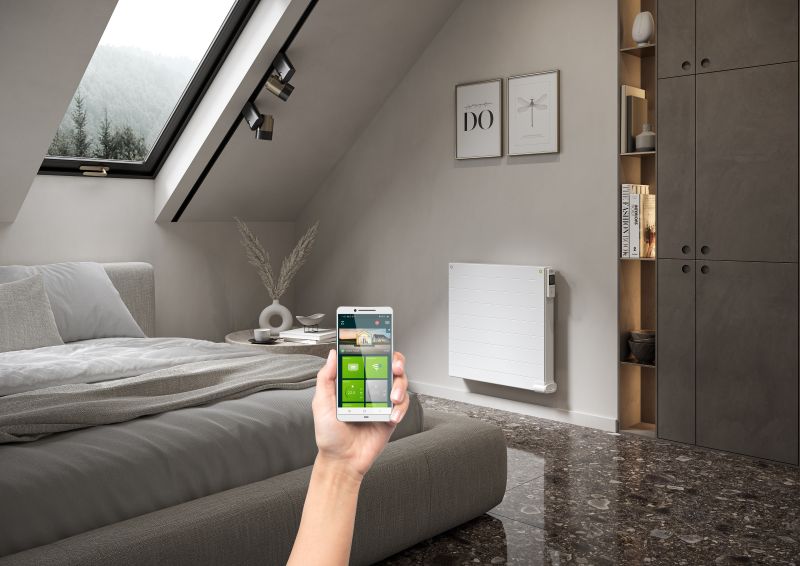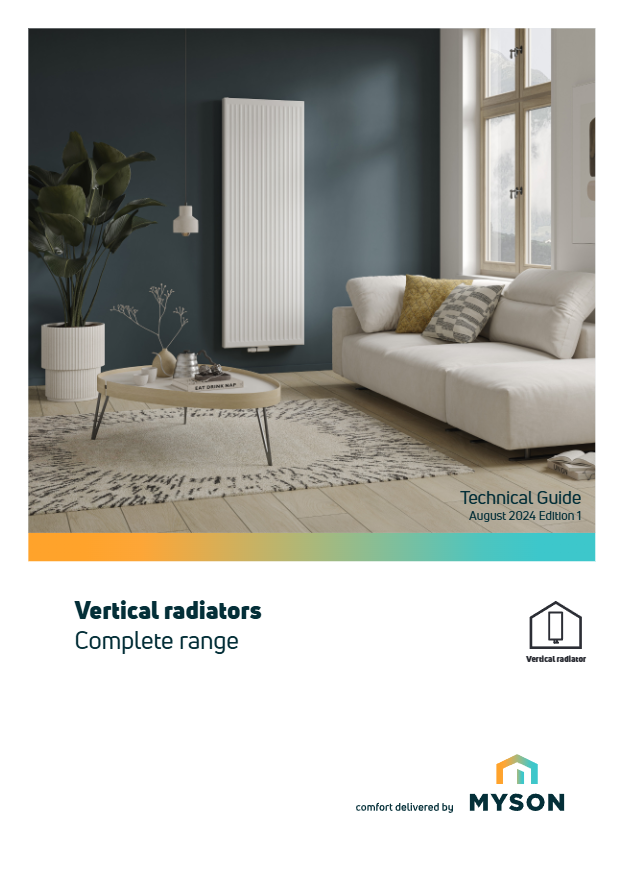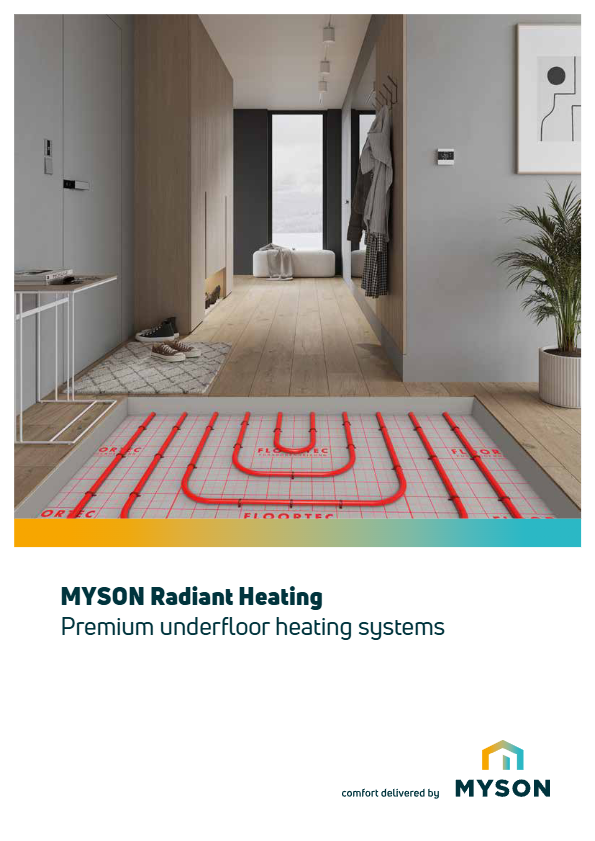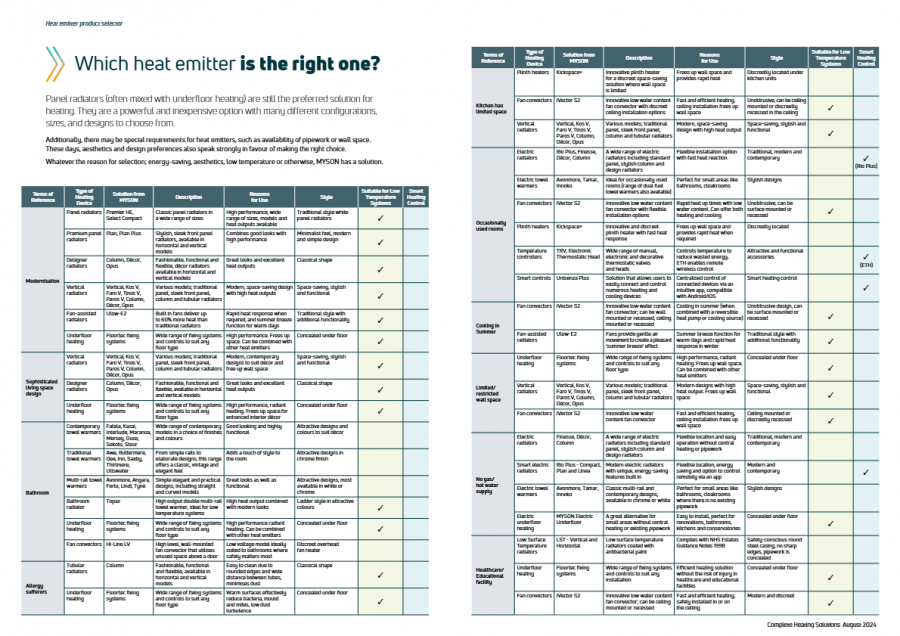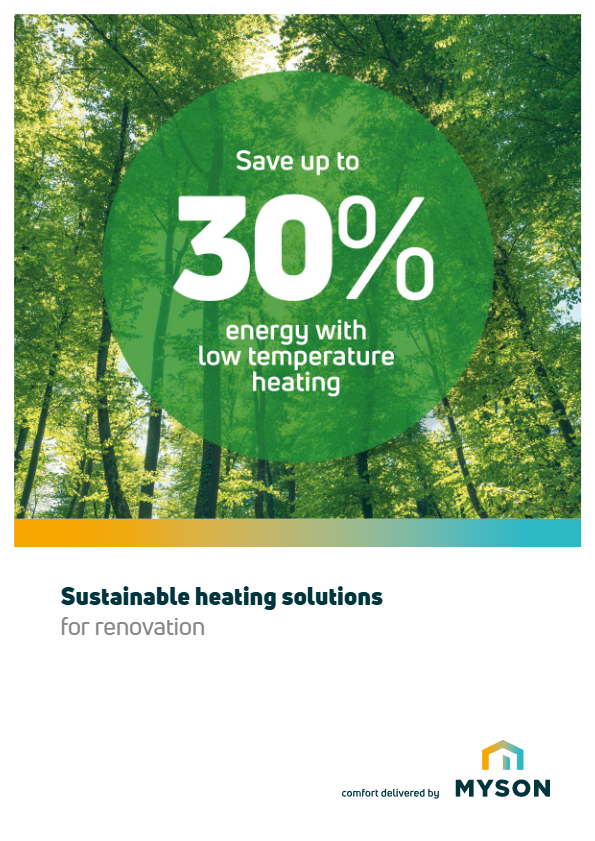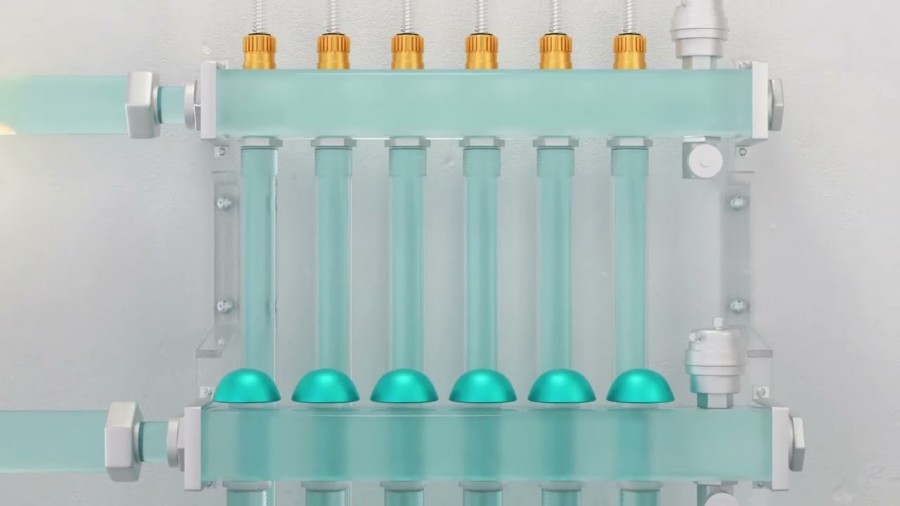In the EU, buildings are responsible for 40% of the total energy consumption and 36% of greenhouse gas emissions. Given that about 50% of that energy consumption is related to the HVAC system, the heating and cooling system offers a great opportunity to reduce our carbon footprint, and is a key factor in obtaining our Net Zero carbon emissions target by 2050.

Why is it so hard to decarbonise our heating?
75% of the existing building stock in Europe is currently considered to be energy inefficient, so aligning our buildings to meet the carbon emissions target is a major challenge. Especially because heating systems based on fossil fuels are well-established, relatively inexpensive, and widespread. Many people delay the transition to low-carbon alternatives because they don’t want to invest money and/or time to adapt their system.
There is no one-size-fits-all solution. For a building to be heated efficiently, the entire heating system must be tailored to the building as well as its occupants’ needs and habits. In addition, thermal efficiency is more than just the heating and cooling system. It’s affected by the building envelope, the degree of insulation, the division of the spaces, etc. All factors that can prove difficult to adjust in existing buildings.
Other factors adding to the challenge of reducing carbon emissions are awareness and acceptance. Many people are still not familiar with low-carbon heating technologies, and concerns about performance and reliability tend to prevail. It will take time and effort to change these perceptions.
How can we reduce our HVAC system’s carbon footprint?
Given the significant share that a HVAC system represents in our energy consumption, it’s a vital part of the answer to the question ‘How to reduce our carbon footprint?’. Both smaller and larger interventions allow for a significant reduction of the carbon emissions and need to be considered.
1. Choose the best energy generator
A good starting point for reducing a building’s carbon footprint is to evaluate its energy generation source. Oil and gas burners are the most carbon intensive heat generators, while thermal solar panels are the least. Ground or air source heat pumps are also a very interesting alternative as their use of renewable energy significantly reduces CO2 emissions compared to fossil fuels. However, not everyone is in a position to install a heat pump, but a modern condensing boiler already provides a good basis for low-temperature heating when combined with the right heat emitters.
2. Combine the heat source with the right emitters
Low-carbon heating systems run on (ultra-)low temperatures. To enjoy optimal energy efficiency and create sufficient heat output, it’s therefore important to choose the right emitters. Underfloor heating is often the first option on people’s minds. However, modern radiators offer an excellent alternative. For temperatures below 45°C, we recommend fan-assisted radiators such our Ulow-E2 or fan convectors such as the iVector S2.
Read about tailored solutions for low temperature heating
Electric radiators are certainly also an interesting option. They can either be used to complement a hydronic heating system or, if the building’s heat demand is low enough, also as a stand-alone heating solution. They are very efficient as they convert every watt of power into usable heat, and in case they can be powered by solar panels (PV), they are carbon neutral.
Read our expert's view on electric heating solutions
3. Ensure the heat emitters are dimensioned properly
For both thermal comfort and energy efficiency it’s important that the heat emitters are dimensioned correctly. If the radiators are too small, for example, they won’t generate enough heat output, meaning the room often won’t get warm enough. On the other hand, if they are too large they’ll emit more heat than necessary and require excessive energy. Both scenarios mean an increase in energy consumption, which is exactly what we’re trying to avoid. Therefore, it’s important to find the right balance and ensure heat emitters are sized correctly.
Find the best radiators for heat output with our product calculator
4. Don’t forget about hydronic balancing
In addition to correctly sizing the emitters, their hydronic balance is also important for the energy efficiency of the heating and cooling system. By optimising the hydronic distribution and making sure every unit is supplied with the right amount of warm water, energy consumption can be reduced by 7 to 11 %. Using adjustable thermostatic valves, you can easily limit the mass flow to avoid unbalanced water distribution.
Hydronic balancing is important for all heating systems, but especially so for low-temperature systems because it ensures the system is set to the temperatures that best suit the energy source and allows it to work as efficiently as possible.
4. Choose the right controls
The controls also play an important role in reducing the HVAC system’s carbon footprint. Better control allows for better tailoring of the system so that you only use the exact amount of energy you actually need to enjoy indoor climate comfort all year round.
The use of basic heating controls such as thermostatic radiator valves already allows for significant energy savings. If the system is upgraded with smart controls, such as the ones in our Unisenza Plus range, potential savings increase even further as the system’s energy use is optimally tailored to the users’ habits, often learning their preferences and automatically adjusting.
Read more about CO2 savings with heating controls
5. Consider zone temperature control
A heating system based on the on/off control of a single zone often fails to create thermal comfort in every room and wastes energy by heating unoccupied rooms. Zone temperature control, on the other hand, combines multiple thermostats, each controlling the temperature of a specified zone, so that different temperatures can be set per zone. As not all areas require heating at the same time or at the same temperature, this allows for more tailored temperature control and avoids wasting energy on unoccupied rooms.
6. Change the thermostat settings
Lowering the thermostat 1 or 2 degrees won’t affect indoor comfort much, but it will have a significant impact on carbon emissions. Just one degree less can reduce CO2 emissions by about 300kg. A nice bonus is that it will also save about 6% on the energy bill. Some thermostats can be programmed to adjust automatically, or to monitor occupant’s behaviour, so that the efficiency of the HVAC system is maximised with little effort on the user’s part.
7. Schedule regular maintenance
HVAC systems are often ignored until something is wrong with them. However, regular maintenance is important to keep them running smoothly and efficiently. If all components are well-maintained, the heating system won’t have to work harder than necessary to meet the temperature requirements. This avoids higher energy consumption and more carbon emissions.
8. Ensure good insulation and reduce heat loss
As mentioned earlier, a building’s thermal efficiency is also affected by the degree of insulation. If important areas such as the roof, floors, walls, basement and attic are properly insulated, less effort is required on the part of the heating system to heat the building. In winter, warmth is more easily kept inside so that the heating switches on less frequently, while in summer the heat is kept out so there is less need for cooling.
Additionally, the higher the degree of insulation, the further the flow temperatures of the heating system can be lowered and the less energy it will require to heat the building. Finally, unsealed walls, windows and doors can create unpleasant draughts but also generate significant heat loss. By sealing up those air leaks and draughts unnecessary energy consumption can easily be avoided.
Conclusion
Regardless of how big or small the interventions you can (or want to) do, all of the tips listed above contribute in their own way to reducing the HVAC system’s carbon footprint. So don’t hesitate to start small if that lowers the threshold. Saving energy and reducing our impact on the planet’s climate is a step-by-step process but, if we all do our bit, at Myson we are convinced that together we can make a difference.
If you are unsure how to reduce the impact of the HVAC system in a particular application or project, don’t hesitate to reach out to our experts. We will gladly answer any questions you might have.
Get in touch










